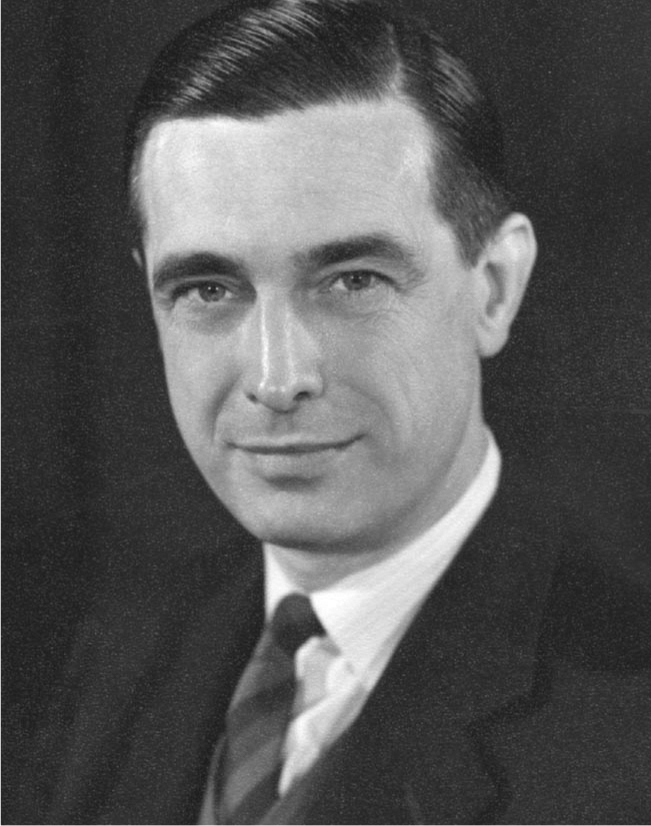Leonard Rotherham
DOI: 10.1063/1.1506764
Leonard Rotherham, a metallurgist and former vice chancellor of the University of Bath, UK, died on 23 March 2001 in Wadhurst, UK. He had suffered from Alzheimer’s disease.
Rotherham was born in Nottingham, UK, on 31 August 1913. He graduated from University College London in 1934 with first-class honors in physics. In 1935, he received an MSc degree for studies on the viscosity of liquids, supervised by Edward N. da C. Andrade.
Joining the Brown-Firth Research Laboratories in Sheffield in 1935 as a principal physicist in charge of the physics program, Rotherham supported the far-sighted approach of the research director, William Hatfield, in extending knowledge of creep in alloy steels. Immediately valuable—but not widely accessible—results emerged that underpinned decisions on alloys for Britain’s earliest jet engines. Rotherham’s external publications during his tenure at Brown-Firth (1935–46) mainly covered concurrent studies of damping capacities and of electrical and magnetic properties.
In 1946, Rotherham was appointed head of the materials division at the Royal Aircraft Establishment in Farn-borough. He led an outstanding team of scientists, whose work was both basic and applied, elucidating mechanisms of fatigue failure, an effort that was vitally important in materials selection and airframe design. He also considered possible roles for ceramics in jet engines. In metallurgy, links were established between grain boundary viscosity and internal friction; Rotherham published his monograph Creep in Metals (Institute of Physics, London, 1951).
Rotherham was appointed director of R…D for the UK Atomic Energy Authority’s industrial group in 1950. Nuclear fuel was of particular concern, with regard to its safe and efficient use, and Rotherham wisely supported the use of Magnox-clad natural uranium fuel elements for the graphite-moderated, carbon dioxide–cooled thermal reactor.
With his contributions recognized by Christopher Hinton, who supervised the construction of the world’s first large-scale, commercial nuclear power station, Rotherham became a member for research in the newly formed Central Electricity Generating Board in 1958. That same year, Rotherham was awarded the DSc degree by University College, London. The Central Electricity Generating Board was responsible for generating electricity for the entire UK, and the research effort to support these developments was huge. New laboratories were constructed at Berkeley, Gloucestershire, and at Marchwood, and existing laboratories at Leatherhead were expanded. Having additional control of several regional laboratories, Rotherham led efforts of several thousand research workers whose output was commensurately large. He not only provided practical solutions, but he encouraged fundamental studies, and the many classic papers in scientific journals are a testimony to his vision.
After World War II, the University of Bath evolved from the Bristol College of Technology, where courses were taught at only subdegree level, mainly to local students. That college emerged as Bath University of Technology in 1966 (later renamed University of Bath), with Hinton as its first chancellor. The problems facing the new university were formidable. It started from a small base of 1186 full-time and 628 part-time students with 240 academic staff, many of whom had neither taught at degree level nor done research but had full academic tenure. University authorities realized that strong leadership coupled with experience managing a complex organization and a strong research record would be needed in a new vice chancellor. Hinton suggested Rotherham, who was appointed vice chancellor in 1969.
Accomplishing much in seven years’ service, Rotherham reorganized the administrative structure, appointed new high-quality staff, and set up the research base, particularly on the applied side. By the time he retired in 1976, the university had grown to 2929 undergraduates, 451 postgraduates, and 325 academic staff. It was solvent, more efficiently managed, and ready for its next phase of development.
Rotherham sat on many government committees and learned societies, notably as president of the Institution of Metallurgists (1964) and of the Institute of Metals (1965). He also was a council member of the Royal Society (1965–66) and founder fellow of the Fellowship of [now the Royal Academy of] Engineering (1976).
Rotherhham was a quiet and reserved person, but highly determined. He did not tolerate fools gladly and could be abrupt in manner. These qualities did not endear him to staff who may have hoped for an easy life in academe. In his retirement, he served as a director of Chemring, a company in Fareham, UK, that specializes in defensive countermeasures such as antimissile chaff; as a consultant to the Wolfson Foundation, a London-based charity that supports the advancement of health, education, and the arts and humanities; and as a governor of Imperial College, London. His main leisure pursuits were golf and gardening.

Leonard Rotherham
CENTRAL ELECTRICITY GENERATING BOARD

More about the Authors
J. Rodney Quayle. 1 Bath, UK .
Geoffrey W. Greenwood. 2 University of Sheffield, Sheffield, UK .
